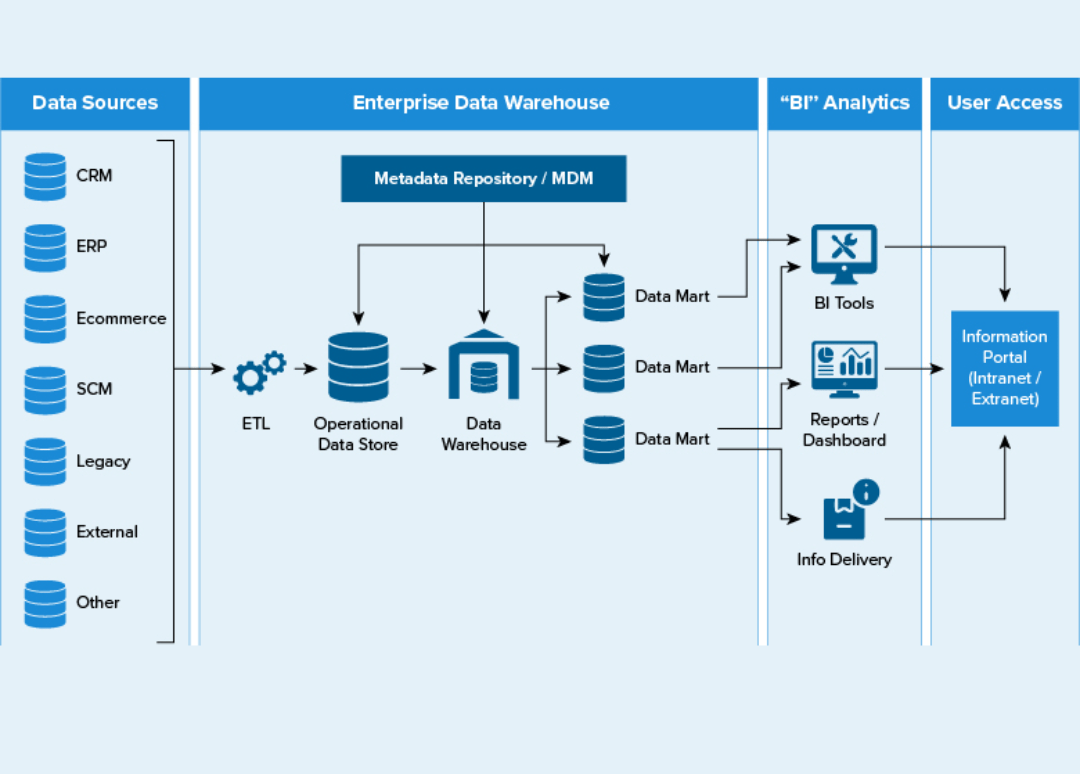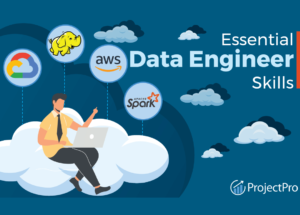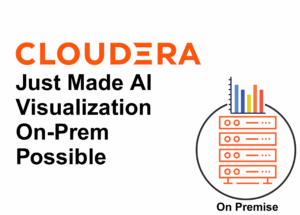
In recent years, the amount of data generated by businesses and individuals has grown exponentially. To handle this massive amount of data, organizations are turning to modern data architectures designed to store, process, and analyze large amounts of data efficiently. The current data architecture is designed to handle big data and enable organizations to make informed decisions based on their data.
Modern data architecture is a complex system that consists of several components, including data storage, data processing, data analysis, and data visualization. In this article, we will examine each of these components in detail and explore how they have evolved over time to meet the growing needs of organizations.
Data Storage
Data storage is the foundation of modern data architecture. In the past, data was stored in traditional databases, such as relational databases, which were designed to store structured data. However, with the growth of big data, organizations are now dealing with a wide variety of data types, including structured, semi-structured, and unstructured data.
To accommodate this diversity of data types, modern data architectures using a variety of data storage technologies, including NoSQL databases, cloud data warehouses, and object stores. NoSQL databases, such as MongoDB and Cassandra, are designed to handle unstructured data and allow for high scalability and availability. Cloud data warehouses, such as Amazon Redshift and Google BigQuery, are designed for large-scale data storage and analysis. Object stores like Amazon S3 and Google Cloud Storage are designed for scalable, durable, and highly available data storage.
Data Processing
Data processing is another essential component of modern data architecture. In the past, data processing was performed using batch processing, which was time-consuming and could not handle real-time data. With the growth of big data, organizations now require real-time data processing to make informed decisions.
To meet these demands, modern data architectures use data processing technologies, such as Apache Kafka, Apache Spark, and Apache Flink. These technologies allow organizations to process data in real-time, making decisions based on the most up-to-date information. Apache Kafka is a distributed streaming platform that enables real-time data processing and supports large-scale data ingress and egress. Apache Spark is an open-source data processing framework that enables real-time data processing and analysis. Apache Flink is a real-time data processing framework that enables organizations to process data in real time and make decisions based on the most recent information.
Data Analysis
Data analysis is a critical component of modern data architecture. In the past, data analysis was performed using traditional business intelligence (BI) tools designed for static reports and dashboards. With the growth of big data, organizations now require more sophisticated data analysis tools that can handle real-time data and provide insights in near real time.
To meet these demands, modern data architectures use data analysis technologies, such as Apache Hadoop, Apache Spark, and Apache Flink. Apache Hadoop is an open-source data processing framework that enables organizations to process and analyze large amounts of data. Apache Spark and Apache Flink are real-time data processing frameworks that also support data analysis. These technologies allow organizations to analyze their data in real time, enabling them to make informed decisions based on the most up-to-date information.
Data Visualization
Data visualization is the final component of modern data architecture. Data visualization enables organizations to make sense of their data and make informed decisions. In the past, data visualization was performed using traditional business intelligence (BI) tools designed for static reports and dashboards. However, with the growth of big data, organizations now require more interactive and dynamic data visualization tools that can handle real-time data and provide insights in near real time.
To meet these demands, modern data architectures use advanced data visualization tools, such as Tableau, QlikView, and PowerBI. These tools allow organizations to create interactive and dynamic visualizations that can be updated in real-time, providing users with up-to-date insights into their data. They also support a wide variety of data sources, including databases, spreadsheets, and cloud data warehouses.
In conclusion, data visualization is an essential component of modern data architecture. With the use of advanced data visualization tools, organizations are now able to make sense of their data and make informed decisions in real time. As the amount of data generated by organizations continues to grow, it is likely that data visualization will play an even more important role in helping organizations make the most of their data.
Please join our Newsletter to be updated with our content and check our Blog for more articles like this.
Don’t forget to share it on social media channels with your friends!




